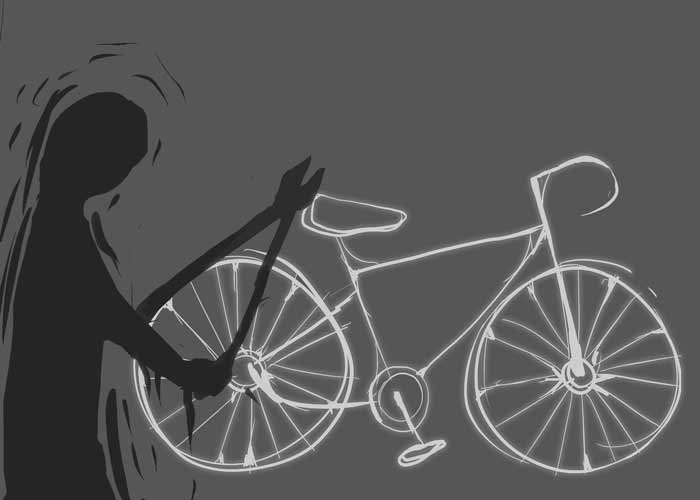Montreal is remarkably bike-friendly; from its bike sharing program, Bixi, to the integration of bike lanes in its planning, the city is uniquely welcoming to those on two wheels. Many McGill staff and students commute to and from school daily by bike, living close too far to conveniently walk but not far enough away to warrant taking transit. During the warmer times of year, bike racks on campus are stocked—a visible sign of the role that bike culture plays in the campus community.
However, what’s less obvious upon first glance, is bicycle theft. A 2012 McGill survey on bicycle theft showed that approximately 50 per cent of students in Montreal have had their bikes stolen, even when they locked them up. Thieves often use bolt cutters to remove bike locks, or they simply remove loose parts that are not locked up, which can be resold individually. Ben Oldham, U3 Arts, is a regular bike commuter, and one of many students who has fallen victim to campus bike theft.
“I’ve never had my [whole] bike stolen, but I’ve always locked it up nice, too [….] My dad nags me about it, so I’m always careful,” Oldham said. “Somebody stole the seat off my bike once because it wasn’t bolted to the frame.”
While there is no ultimate solution to bike theft, there are measures that individuals can take to increase their bike’s security and, in the case that it is stolen, their chances of getting it back. The same survey showed bikes locked with a cable have a 30 per cent higher chance of being stolen than those with a U-lock. Although cables are popular, they’re easy to cut with bolt cutters, while U-locks are far more durable and nearly impossible to break.
Another security precaution bike owners can take is to get their bike permanently engraved with a number that is entered into a police database, making it easier to track if stolen. Engraved bikes are less likely to be stolen by thieves looking to resell bikes; the tracking number is a giveaway that it’s been stolen. Eli MacLaren, assistant professor in the Department of English at McGill, learned the importance of engravings the hard way after his bike was stolen from his backyard.
“[My family] stores our bikes in a shed behind our house, in our backyard out of view from the street,” MacLaren wrote in an email to The McGill Tribune. “Someone came into our backyard [in September], opened the shed, and took my bike. Since [my] bike had no police tracking number, the police said that the chances of recovering it were low.”
Once a semester, McGill Security Services works with the Montreal Police to provide free bike engravings for all McGill students and staff members on the Downtown campus. This engraving increases the chances of finding students’ stolen bikes.
Locking bikes in high-traffic areas, like around the Y-Intersection on McGill’s downtown campus, also decreases a bike’s likelihood of being stolen. Through his experience with bike theft, Oldham has learned the importance of finding the proper place to park.
“I try to leave [my bike] somewhere well-populated, so I figure people would notice someone trying to break my lock,” Oldham said. “I hope it would at least deter someone from targeting my bike.”
Beyond taking these everyday safety precautions, the student biking community as a whole can look out for each other and keep campus security in the loop on suspicious activity.
“As a community, we can all keep an eye out for suspicious behaviour,” Oldham said. “At the end of the day, I think the best thing is to create a culture where we’re always talking to one another about bike safety and watching each other’s backs.”







